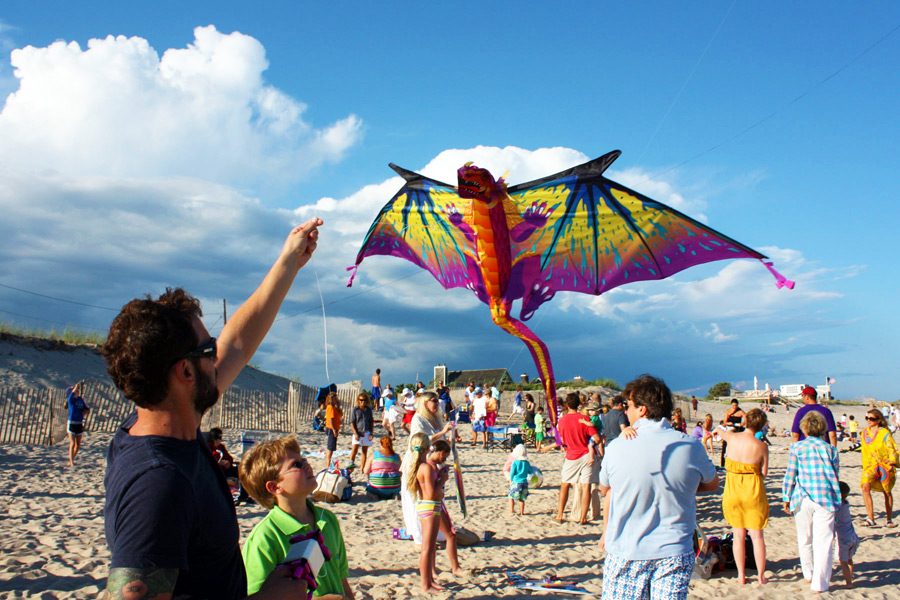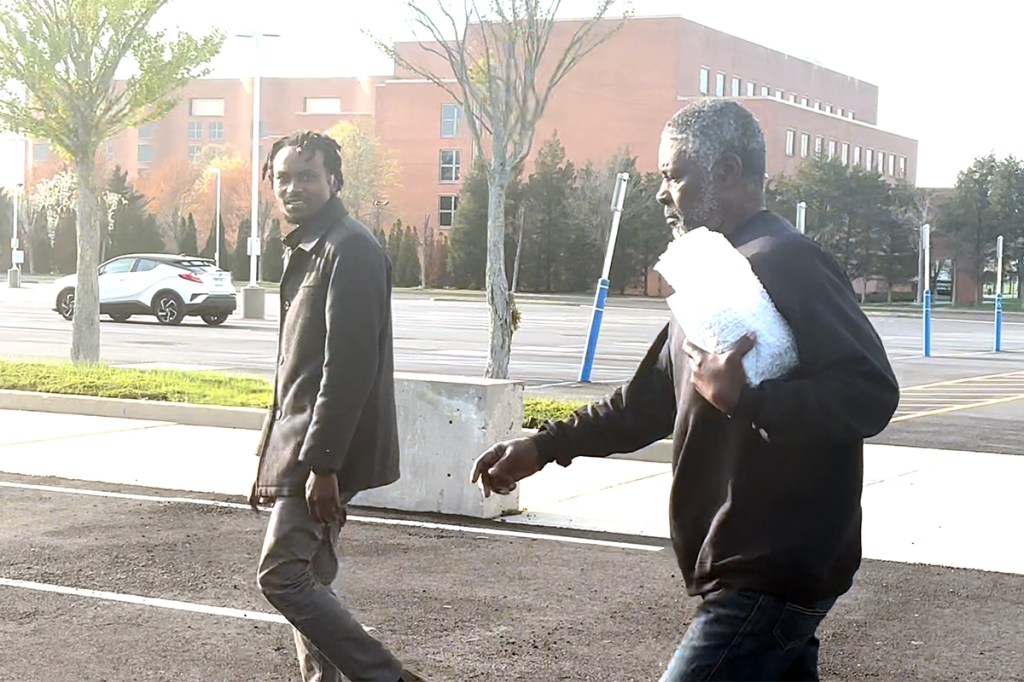Up, Up and Away! 42nd Annual Dan’s Kite Fly Takes Flight This Sunday

What’s better than ending a Sunday beach day at Dan’s Papers’ 42nd Annual Dan’s Kite Fly?
During the oldest kite festival on the East End, presented by Surf Panda and Hampton H20, wild wind structures will soar to the music of Jim Turner, while kids get their faces painted and experience a homegrown event like no other. With that as inspiration, we offer 42 fascinating kite facts to honor 42 years of fun.
•The world record for the longest “kite fly” is 180 hours. Ours won’t be quite that long, but wow, we admire the dedication!
•More adults fly kites than children.
•Kites were used by the ancient Chinese to ward off evil spirits.
•The smallest kite in the world, which actually flies, is 5mm high.
•The longest kite in the world is 3,394 feet.
•The highest kite flown went 12,471 feet.
•The highest a train of kites has flown is 31,955 feet.
•The fastest kite went 119.9 mph.
•The largest number of kites flown on a single line is 11,284.
•You do not need wind to fly a kite.
•50 million kites are sold a year in the U.S.
•During the American Civil War, kites were used to deliver letters and newspapers.
•Kites were made of leaves 3,000 years ago.
•April is National Kite Month (but we prefer the month of August).
•Benjamin Franklin said a kite should be constructed of cedar and a silk handkerchief.
•Some Japanese kites weigh more than two tons.

•Kite flying is not popular in Iceland or Russia. They need a Dan’s Papers Kite Fly!
•Kite flying is one of the fastest growing sports in the world. New Olympic event?
•There is at least one kite festival every weekend of the year in some area of the world.
•The Chinese believe that looking at kites in the sky can improve a person’s eyesight.
•There are 78 rules to kite fighting in Thailand.
•Kite flying was banned in China during the Cultural Revolution.
•Kite flying was banned in Japan in 1760, as people wanted to fly kites instead of work.
•The biggest kite museum is in Vee Phuong, a city in China, with 2,000 kites.
•Russians used kites to tow torpedoes in the 1800s.
•The Chinese name for a kite is Fen Zheng, which means wind harp.
•In Gujarat, lawyers have written messages on kites to tell people about human rights.
•Tom Kite won the U.S. Open in 1992. It was golf, not kite flying, but still fairly impressive.
•A kite can be any shape.
•The most popular kite shapes are diamond, delta, box and sled.
•The Kite Flying Tournament is won in the novel The Kite Runner because the strings of all other kites are severed by shards of glass.The Kite Runner is not set on Sagg Main.
•Teams and pairs of kite flyers often use headsets to communicate during competition.
•The airplane is really a mechanized upgrade of the kite. More legroom!
•Kites large enough to carry people were banned in East Germany because then people had a way to get over the Berlin Wall.
•Kites are often used as a fishing technique. But we don’t see many being tried in Montauk.
•In 1901 Marconi used a kite to transmit the first radio signals across the Atlantic Ocean.
•In 1964 the song “Lets Go Fly a Kite” was made popular by the movie Mary Poppins.
•Kiteboarding mixes water sports with kiting.
•A kiteboarder is called a “Charlie Browner.”
•Kiteboarding dates back to the 13th century. The Chinese used it as a means of transportation. Might not be bad in East End weekend traffic.
•The Town of Southampton will lift sticker-parking restrictions at Sagg Main Beach after 5:30 p.m. on August 3, allowing visitors to attend the Dan’s Papers Kite Fly for free, as long as you park in the beach parking lot.




